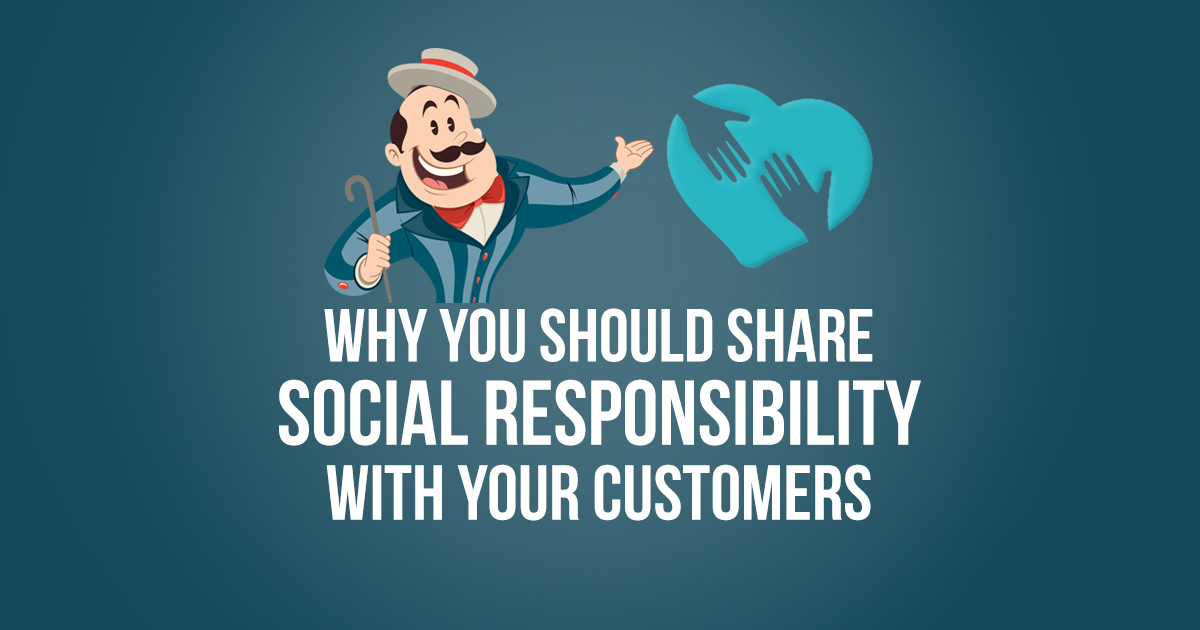
Why Your Customers Want to Know About Your Social Good
Marketing Tips Social Responsibility
Guest Blog Post by Leah Feor of simplysustainableblog.com
How to Share Your Social Good Story
Does your business go above and beyond for the community? Your customers want to hear about it!
Corporate Social Responsibility (CSR) is the practice of doing more social good than is required by law or by industry standards. It’s going that extra mile when it comes to the wellbeing of community members and the environment.
Over the years, the focus on being socially responsible in business has grown, and it’s newsworthy for your audience.
Being Social About Being Socially Good
With an increase in demand for companies and corporations that are accountable and responsible, customers are seeking out products and services that address social and environmental issues. In fact, studies have shown that many customers will boycott a company if they carry on irresponsible business practices.*
Because transparency and accountability go hand in hand, sharing stories about your company’s CSR practices will help gain the trust and confidence of your current and future customers.
Getting Their Vote
Customers are faced with countless options on how to spend their money. They have many brands to choose from, so if you want your business to stand out why not do something beyond the norm that sets you apart?
Does your company make a positive impact? Take what you already have and build from there. Maybe you use recycled materials to make your products, or you provide jobs in an area that faces high unemployment. Perhaps it’s that you run an annual toy drive at your office or run a marathon to raise funds for a good cause.
No matter the size of the impact, if it’s positive, it’s worth sharing. And if you haven’t yet focused on social responsibility, now is a great time to start!
By communicating information and stories with your followers, you’re helping them understand what their purchase is supporting. If you can add value to your goods and services by helping your community and environment, your customers will appreciate learning the details so that they can cast their vote.
“Every dollar you spend . . . or don’t spend . . . is a vote you cast for the world you want.”
― L.N. Smith
What Kind of World Do You Want to Live In?
There are different reasons why companies emphasize social responsibility as part of their business plan. Some have a personal connection to the cause; others find it’s a great way to give back to the community where they operate.
What are some of the positive impacts your company is making in the community? Were they intentional, or a pleasant byproduct of your operations?
Once you’ve identified how your company is giving back, consider how you can share your story. Doing things for others feels good, and people love a feel good story. Let your customers know about the kind of world you want to live in, and how you’re working to achieve that goal.
Measuring Your Social Impact
No matter your level of social responsibility, it’s important to measure your efforts and your impact. This will help you backup your feel good story with facts and figures.
This is where Social Impact Measurement (SIM) comes into play. We can define SIM as the act of measuring the social impact generated by an activity. It’s a great business tool and can help with your company’s marketing strategy by laying a strong foundation.
Since transparency is used as a tool to gain customer confidence, social impact is something that you’ll want to be transparent about. Let your customers hear the truth, allowing them to make a meaningful and well thought out decision.
Metrics that Matter
If you want to share the right information about your social good deeds, start by identifying which data you want to watch, and what metrics you want to communicate with your customers.
For example: If your company donates a meal to the local soup kitchen for every unit of merchandise sold, then you can measure how many meals are served per month or year because of your contribution. At the end of a defined period of time, you can share an infographic about how many meals were served thanks to the support from customers’ purchases.
Since there’s a timeline involved, it will take a few months for the metrics to have meaning, and furthermore turn into good marketing material.
While your social good program or activity can be promoted from the time of kick off, it’s only fair that customers give a company a few months or even a fiscal year to gather information to share with stakeholders. In the meantime, take lots of photos and encourage employees, community members, and customers to share their comments about how the social good initiatives are making an impact in their lives.
More than Marketing
At the end of the day, communicating social good is about more than marketing. It becomes a tool to empower others to create a ripple effect in their community. The positive impact of doing good business while helping others along the way provides a high return on investment, one that’s even too big for the bank.



